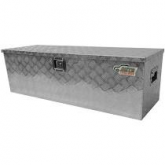So, the first run went well. I got about 267ah on the first real scenario run on the new system and everything was balanced pretty well (fell out a bit near discharge).
Then I went into charge mode from the grid. All was well until about 3.4v/cell (This is when charging starts to pick up) as this happened my cell balance couldn't keep up. The faster the bank went up, the faster the cells went bonkers out of whack. By the time I hit 3.5v/cell average I had to shut down the charger(charging from the mains). I was off by .6 volts from the highest to the lowest cell!
I'm not sur what is going on now. Giving the cells a rest, shut er down and letting the active balancer do it's thing overnight and will start back in the morning.
Other notes. NOT happy with the Victron 500a shunt. (Drops out on bluetooth, barely any distance as well). My Chinese JK active balance does a wonderful job! SO, I got to thinking.. Why after finding out what your battery capacity is do you even need another possible problem in the system?
My JK balancer tells me all I need to know, and the inverters do the rest.
The Victron will be going back and removed from my system. Then after
@JoeHam pointed out my Blue Sea disconnect really isn't rated for a 48v system (Another bottle neck) That one is going back as well! I kinda have to agree with Will here on the fact that do you actually need it? Being an electrician it's common practice to always provide a safety switch, breaker, fuse or some sort of shut off for safety, but he is right in my opinion.. Once connected properly, if you ever have to work on it.. Disconnect one wire and your done. You know even if you have a disconnect, you have all that open bus that can still do damage. I do however understand the convenience of having one for possible work on the system don't get me wrong, but mine will be Deleted.
The point is.. Every joint, or connection you make to your system is a point of failure. We have to be safe, but be smart! Every situation is different.
Thanks to everyone in the forum here. Without all you guys I couldn't have made it this far. Absolutely love this!
Be Safe!,
Dan
 Any pointers or ideas welcome!
Any pointers or ideas welcome! Any pointers or ideas welcome!
Any pointers or ideas welcome!


